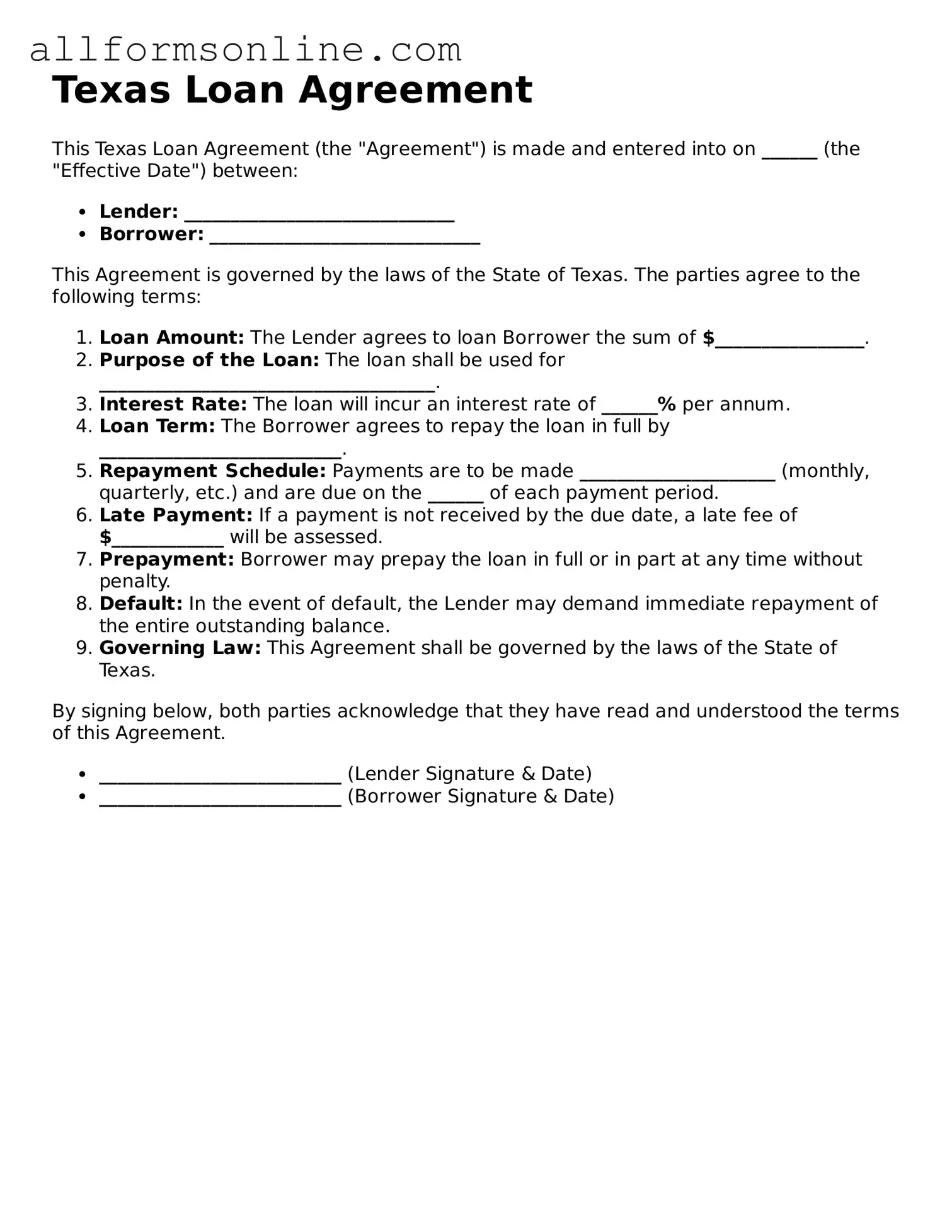What is a Texas Loan Agreement form?
A Texas Loan Agreement form is a legal document that outlines the terms and conditions of a loan between a lender and a borrower. It specifies the amount borrowed, interest rates, repayment schedules, and any collateral involved. This form helps protect the interests of both parties by clearly detailing their responsibilities and expectations.
Who typically uses a Texas Loan Agreement?
This form is commonly used by individuals and businesses in Texas seeking to formalize a loan arrangement. Whether it's a personal loan between friends or a business loan for operational expenses, having a written agreement ensures clarity and accountability for all parties involved.
What are the key components of a Texas Loan Agreement?
A typical Texas Loan Agreement includes several important elements. These typically consist of the loan amount, interest rate, repayment terms, due dates, and any fees associated with the loan. Additionally, it may outline the consequences of default, such as late fees or legal actions, and specify any collateral that secures the loan.
Is it necessary to have a Texas Loan Agreement notarized?
While notarization is not always required for a Texas Loan Agreement to be valid, it is highly recommended. Having the document notarized adds an extra layer of authenticity and can help prevent disputes in the future. It serves as proof that both parties willingly entered into the agreement.
Can a Texas Loan Agreement be modified after it is signed?
Yes, a Texas Loan Agreement can be modified, but both parties must agree to the changes. It’s essential to document any modifications in writing and have both parties sign the amended agreement. This helps maintain clarity and ensures that everyone is on the same page regarding the new terms.
What happens if the borrower defaults on the loan?
If a borrower defaults on the loan, the lender may have several options depending on the terms outlined in the agreement. These can include charging late fees, demanding immediate repayment, or pursuing legal action to recover the owed amount. The specifics will depend on the provisions included in the Loan Agreement.
Are there any state-specific laws that affect Texas Loan Agreements?
Yes, Texas has specific laws that govern loan agreements, including interest rate limits and disclosure requirements. It's important for both lenders and borrowers to be aware of these regulations to ensure compliance and avoid potential legal issues. Consulting with a legal expert can provide valuable insights into these laws.
Where can I obtain a Texas Loan Agreement form?
Texas Loan Agreement forms can be found through various online legal resources, law offices, or financial institutions. Many websites offer templates that can be customized to fit your needs. However, it’s wise to review the document carefully or seek legal advice to ensure it meets all necessary legal requirements.
